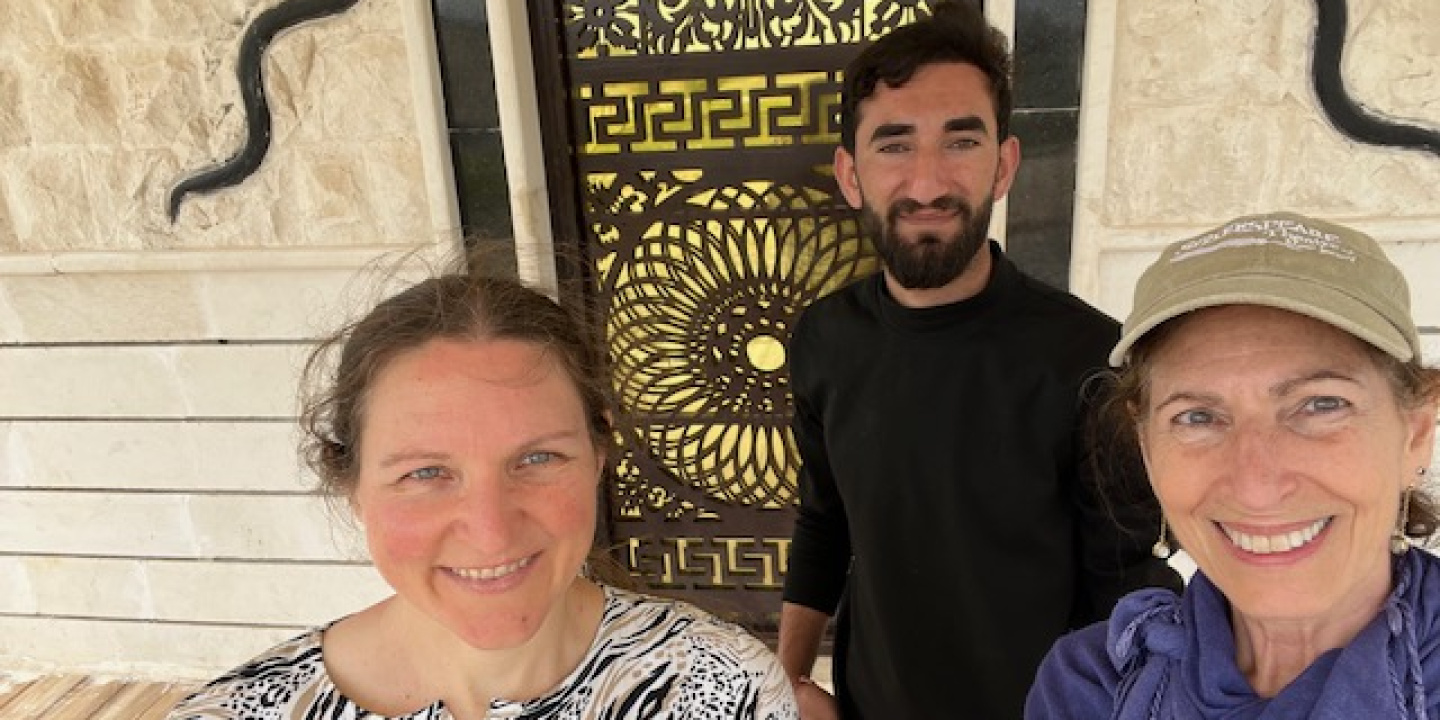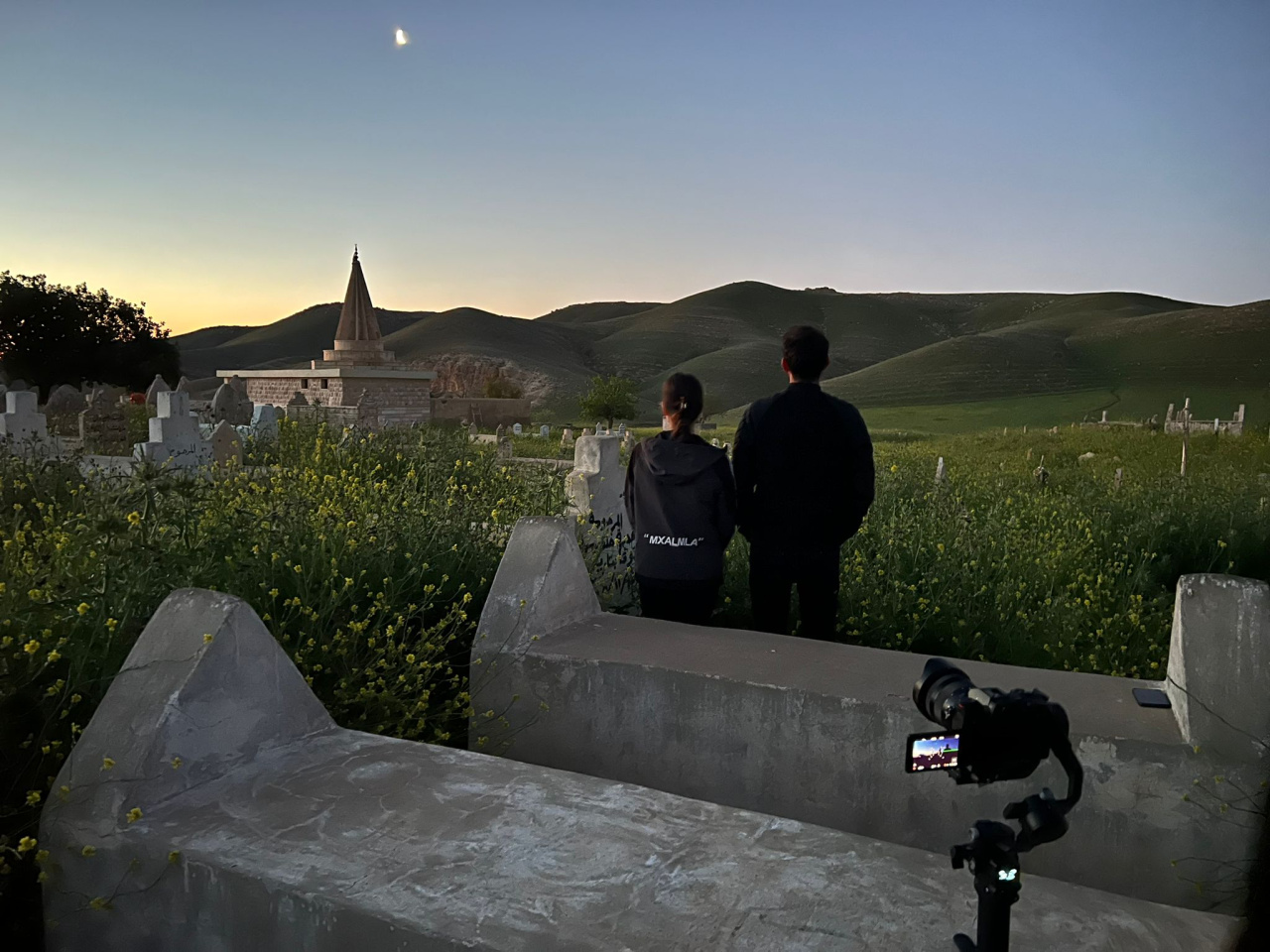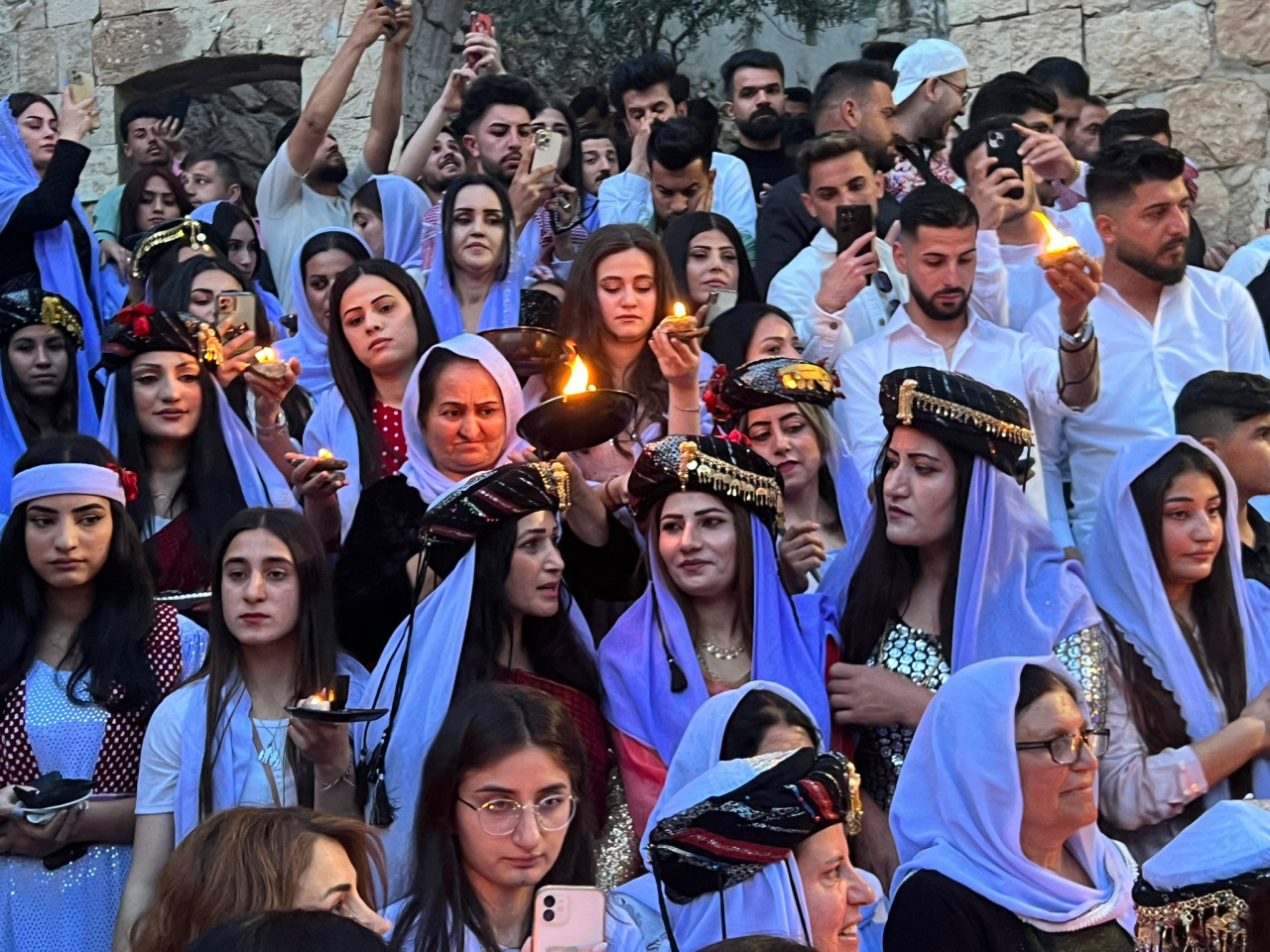
Sr. Makrina Finlay (left), Fahed Shammo (center), and Anisa Mehdi (right) at Sheikh Mand Shrine | Photo by Anisa Mehdi
After a week or so in Baghdeda I made my way west to Shingal, the Ezidi ancestral homeland. Shingal (also known as Sinjar) is also in Iraq’s Nineveh Province. Mount Shingal, sacred to the Ezidis, is really a dense range of mountains. A geologic marvel. It's 60 miles long, rising alone above the wide, flat Nineveh Plains. Rich in water, arable soil, oil, ores, and views, Mount Shingal is coveted by Iraqis, Kurds, Syrians, and Turks. The remains of villages litter its foothills.
There is no powerful church to aid reconstruction nor to call attention to the dire needs of the Ezidi community. Some shrines, like Sheikh Mand, have been rebuilt since the 2014 rampage of Daesh. But most villages still lay in waste. Orchards once ringed Shingal City. Now only a few spindly olive trees are left. Portraits of dead and missing loved ones … mass graves … homes and schools, mutilated. Veritable museums of genocide. Aid organizations are building new homes of concrete blocks that are freezing cold in winter and sweltering in the summer. Thousands of displaced Ezidis prefer to stay in tents on Mount Shingal.
On a foggy morning in April, we visited an Ezidi shrine atop a mountain now enclosed by barbed wire, reminding us of the military base nearby. At this and other surviving and rebuilt shrines, Ezidis tie knots as a form of prayer into brilliantly colored scarves, light candles, and remember loved ones – all parts of the practice of xêr, or communal goodness that we are documenting for our project and for posterity.
API researcher Sr. Makrina Finlay, PhD, is undertaking one of the first attempts to research and articulate the principles of xêr with funding from the ALIPH Foundation. Until the genocide in 2014, the practice of xêr was woven so finely into the fabric of religious and social life that, for Ezidis, it needed no further explanation. However, the destruction of shrines, where many forms of xêr had been practiced, as well as the realities of displacement and poverty, have upset not only the physical structures that made communal life function; they have also upset the infrastructure of xêr.
Sr. Makrina is visiting shrines, attending significant feasts and festivals, and engaging with Ezidi community members in Northern Iraq. The resulting research will provide material for eight short films that demonstrates xêr as the basis of Ezidi society and religion. Results of these research and preservation efforts will be preserved as films to share with the global community.
For more information about this project, take a look at our June 2023 webinar where we’re joined by project manager, Sr. Makrina Finlay!



